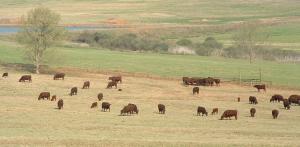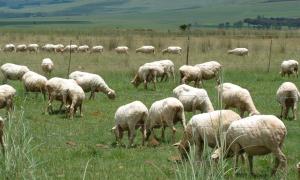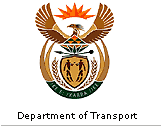 |
Livestock ProductionKwaZulu-Natal is one of the main livestock farming areas
in South Africa with extensive herds of beef and dairy
cattle, flocks of wool and mutton sheep, and numbers of
large piggeries. Goats are largely confined to communal
farming areas and do not form a major part of formal
commercial
livestock production in the province, although their
numbers are increasing.
The province has a total of 6,5 million hectares of land
for farming purposes of which 82 percent is suitable for
extensive livestock production and 18 percent is arable
land.
The relative proportions of livestock distribution in
South Africa are shown in the table below.
CattleThe Highveld and Midlands areas of KwaZulu-Natal are the
main beef production areas , with dairy cattle being more
prevalent in the Midlands and southern KZN. Of the total
number of 13.9 million cattle in the RSA in 2005, 2,8
million (20%) were in KwaZulu-Natal. The numbers of cattle
increased from 2004 to 2005 by 155,000 animals.
There is a growing trend to finishing beef cattle in
feedlots, and it is reported that about 60% of cattle in
South Africa are now finished for slaughter in feedlots
that maximise the potential of the animals by feeding
grain and supplements to achieve best potential weights
and grades.

Beef cattle Midlands
|

Sheep Grazing
|
SheepOf the total number of 25.3 million sheep in South Africa
in 2005 the KwaZulu-Natal total was estimated to be 775
000 [3%]. Sheep farming is concentrated in the drier areas
of the province along the Drakensberg, Vryheid and
Southern Natal.
A major deterrent to sheep production in KZN in recent
years has been the very high level of stock losses due to
'theft'.
PigsThe pig population of KwaZulu-Natal was estimated to be
164,000 in 2005, with Estcourt, Mooi River and Dalton
being areas with concentrations of piggeries. GoatsGoat numbers at the end of November 2005 are estimated for
KwaZulu-Natal at 938,000 (14,5%), which represents the
third highest goat population in South Africa.
Meat processing is described in a separate section of
this databank under the heading Meat Processing and
Distribution, and Poultry in a seperate section. Transport of LivestockFor transport of livestock of all kinds, road transport is
the only available mode as the railways have withdrawn
services for animals. Road transport also reduces the
stress on transported stock by reducing journey times and
thereby avoiding the problems caused by reduced water
intake and periods with no feeding, which is unavoidable
when animals are in transit.
For large-scale movements of animals rail transport should
be cheaper than road transport, and is possible for all
forms of livestock. The limitation of rail transport is
that the consignor has to pay for the full use of the
truck, whether it is full or empty. It is also necessary
to plan the movements of animals well ahead of time in
order to request the required number of rail trucks. The
transportation of live cattle is governed by
transportation welfare codes, known as LWCC, and according
to the railways, trucks containing livestock are carefully
monitored and taken to their destination as quickly as
possible, but in fact delays do occur leading to weight
loss, stress and mortality. For this reason generally,
rail transport is not regarded as suitable for moving
animals to abattoirs.
|
 |



